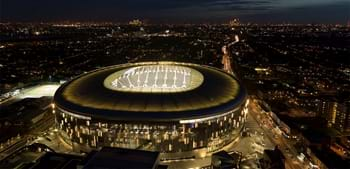“I knew a few people involved, people in my age group and at my school. A lot of people got charged and sent to prison.
“It all side-tracked the community – afterwards, it was a very eerie two weeks. I’m used to noise, a collective, diversity, music – the fish market playing reggae music – all of that was gone. That was when you saw the lonely effect it caused people.
“Carpet Right on Lansdowne Road was burned down, there were two burnt out police cars on the High Road, the roads were a mess – glass shattered everywhere – a lot of small businesses boarded up.
“It’s something I’ll never forget – it was a pivotal part of my life because I’d never seen a riot. You watch the news and see what goes on in other countries and can’t relate, but when it happens on your own doorstep, it reinforces the trauma.”
The following weekend’s Premier League season opener against Everton at the Lane was subsequently postponed and, as a Club, we swiftly turned our focus to assisting our community in rebuilding.
In the immediate aftermath, we worked with local businesses to help them back on their feet, with promotion across our channels and visits from players and Ambassadors, while further enhancing our community programmes aimed at engaging young local people in positive activities to steer them away from crime and anti-social behaviour.
Most significantly, a Memorandum of Understanding signed by Tottenham Hotspur Football Club and Haringey Council after the riots saw both parties making a commitment to working together for the benefit of the local area, with the Club’s new stadium serving as the centrepiece for the positive transformation of north Tottenham.
The vision is best described by our Chairman, Daniel Levy, who said: “The impact of our new stadium will be felt across the world, which means it can make a huge difference to our local area. Our development has the ability to attract corporations, to create jobs, essentially to drive the local economy and make Tottenham an incredibly exciting, thriving place to live and work.
“We did not just want to build a stadium. We wanted to change the prospects for those that live in this part of London, particularly after the 2011 riots, and for our stadium to be the flagship development that kickstarted its regeneration.”
Fast forward 10 years, the benefits of what the new stadium and its wider development promised to bring are starting to be felt by a community that had been through so much.
Indeed, the opening night of the stadium in April, 2019, saw a poignant performance of Everybody Dreams by the students of Gladesmore Community School – a song first written in August, 2012, as a positive response to the riots of a year before.
Credit: Source link










